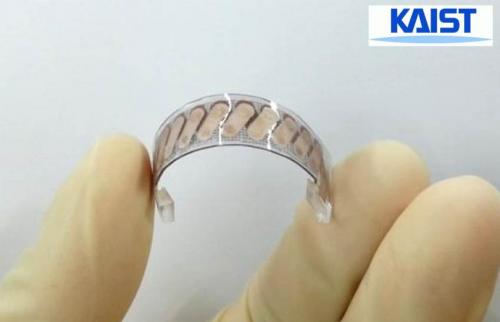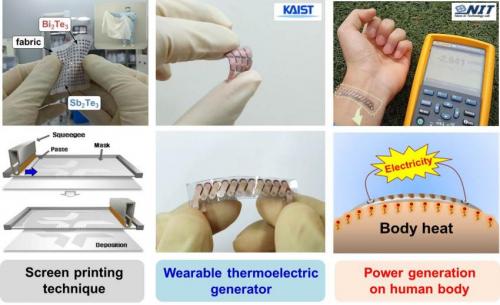
Researchers at the Korea Advanced Institute of Science and Technology (KAIST) wanted to discover a way to produce a reliable source of power while adhering to the increasingly popular trend of wearable technology. The group developed a thermoelectric (TE) generator that takes the form of a wristband. The generator itself is malleable and can bend to fit any wearer’s wrist. From the human body’s heat, the device will absorb that energy and convert it into electricity. The team of researchers led by electrical engineering professor Byung Jin Cho innovated a highly operative glass fabric-constructed thermoelectric generator.
This TE generator measures in at 10 cm x 10 cm, and is extremely light as per the commercialization of comfortable wearable technology. The design reduces the thermal energy loss and ultimately expounds the total output of power. This process takes n-type liquid pastes of Bi2 Te3 and p-type Sb2 Te3 and prints them onto glass-based fabric through a system of screen printing. The process of TE energy generation has already been executed twice prior. They were either inorganic or organic-based, where the generators implemented polymers. Although the inorganic TE generators produced a nice amount of electrical energy, they were much too bulky to become portable. Hence the organic option became the go-to technology for this project for its small and versatile properties. As stated in a press release, “The organic-based TE generators use polymers that are highly flexible and compatible with human skin are ideal for wearable electronics. The polymers, however, have a low power output. Inorganic-based TE generators produce a high electrical energy, but they are heavy, rigid, and bulky.”
Professor Cho delineated that this version of the TE generator is self-sustaining in the power department. It holds inorganic TE materials while the substrates are being eliminated. He explained that “the glass fabric itself serves as the upper and lower substrates of a TE generator, keeping the inorganic TE materials in between. This is quite a revolutionary approach to design a generator. In so doing, we were able to significantly reduce the weight of our generator (~0.13 g/cm2 ), which is an essential element for wearable electronics.”
This TE generator can withstand up to 120 bends. KAIST's press release specified that “it is so flexible that the allowable bending radius of the generator is as low as 20 mm. There are no changes in performance even if the generator bends upward and downward for up to 120 cycles.”
In the future, this technology will be applied to the development of factories, automobiles, and airplanes. 
Story via KAIST, Phys.org
Advertisement
Learn more about Electronic Products Magazine





